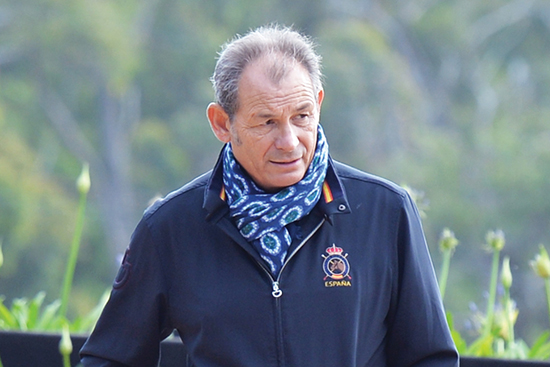 Words by Christopher Hector & photos by Roz Neave
Words by Christopher Hector & photos by Roz Neave
It’s easy to put people in neat little pigeonholes, as in, Rafael Soto, oh yes, the Spanish guy, master of in hand work and piaffe… Well yes, Rafael is all of the above, but he’s a lot lot more: a multiple Olympian, a competition trainer who works with the world’s best, and the official trainer to the Spanish Dressage Team…
So take a little time, and sit with me on a perfect Spring morning in Australia, and watch Rafael work with Pernille Hogg and her five-year-old, Bestseller.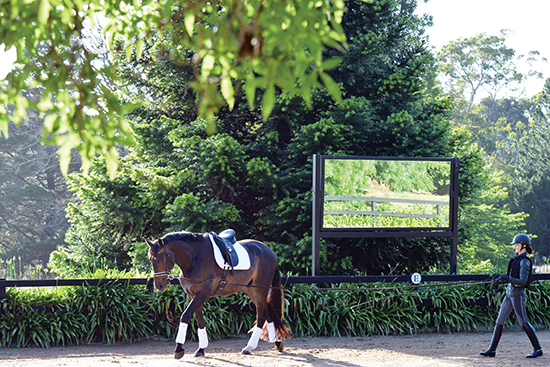
The work starts on the lunge and I am reminded yet again, what a valuable tool lunging is, not just for the horse but also for the rider. Freed from the task of having to balance her body in the saddle on the back of a moving object, Pernille is able to really concentrate on the aids she is using when she is lunging…
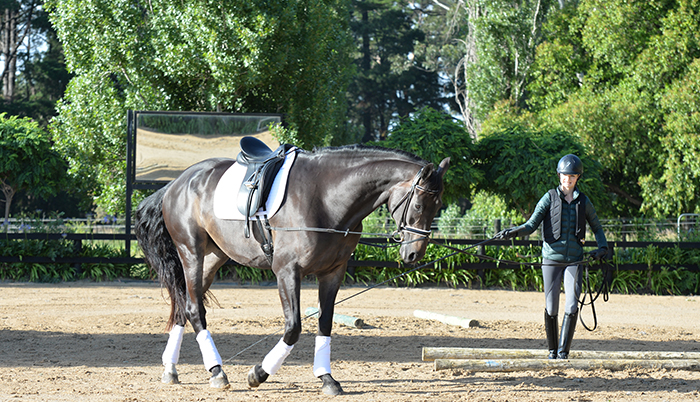
As Rafael explains, lunging a horse is the same as riding a horse: “Tell him to be stable in the trot with small half halts. Touch with the whip, and also use a half halt just like you are on the horse.”
“Don’t forget that riding is this: to be in balance, to push, to hold and release – the three most important words, push, hold, release. To get to the point when the horse is in self-carriage like he is naturally in the paddock. This is dressage, it comes from the nature of the horse, and we have to go back to this.”
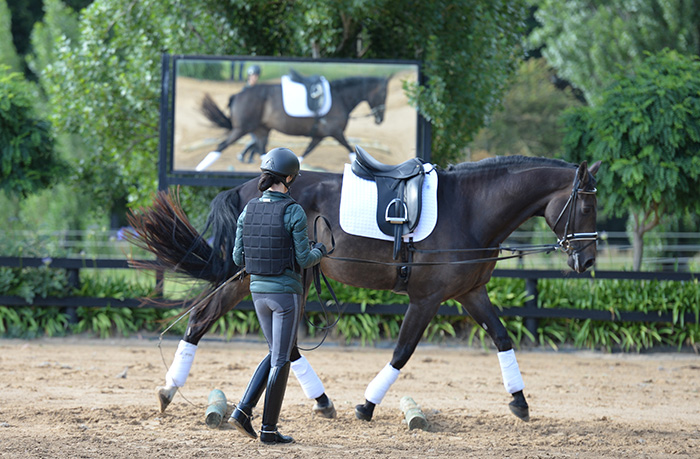
“The main thing in riding is preparation, so to have the horse in balance, think about the transitions. Always in the transitions keep the ‘pushing’, for walk to trot, trot to canter, walk to halt, half halt and keep pushing, like when you are on the horse. The secret of transitions is that this is where the horse learns balance, this is where you see if a horse is trained or not.”
Lunging is also a great opportunity to explain to a fit, healthy youngster what is and what is not acceptable:
“The horse needs to trust the aids of the rider, but also needs to respect the aids of the rider. Canter, but don’t let him play with the croup up, get his head up. When he wants to drop the contact, raise your hand. In the canter, keep the contact and keep pushing. If you have the contact then you can push, but then you get light contact – self carriage – and you can manage the contact and everything is easy, turn left, turn right, anything. Push, then one second later, a light contact – that’s what you need to do when you ride him. Lunging is exactly like riding if you lunge them the right way. If you lunge them just to make them tired, that’s stupid.”
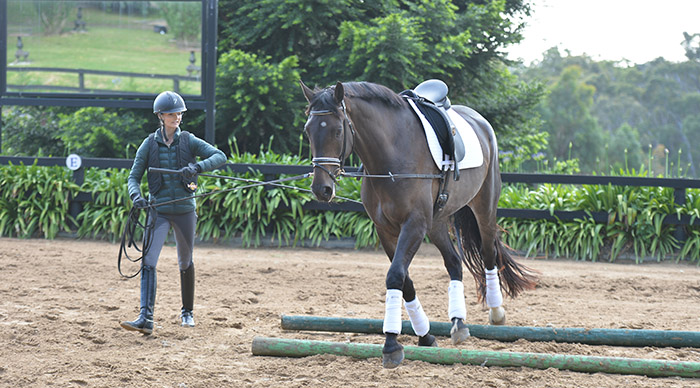
Pernille was lunging little circles over the cavalletti: “That’s beautiful, you can make him ready for little steps of piaffe like that.
That’s funny, with all this cavalletti work I thought I was back at Münster, with Ingrid Klimke…
“Ingrid is one of the great masters we have, the daughter of the great Reiner Klimke, and she is such a nice person, and a super rider for eventing, for dressage and jumping, she is one of the most complete riders that I know. Like Ingrid, I have used cavalletti for a long time. It is good for the horse’s back, and to recover the horse’s balance. If a horse has a problem in balance with the rider on his back, the work with cavalletti can rehabilitate that balance.”
“It is very good with young horses like this one, it gives them such good balance. Put some cavallettis in the middle of the riding arena, and leave them there when the rider is on the horse, because trotting through those cavallettis can give such a good feeling. The horse sees the cavallettis and he focuses on his steps, where are my legs? It is very good for the horse.”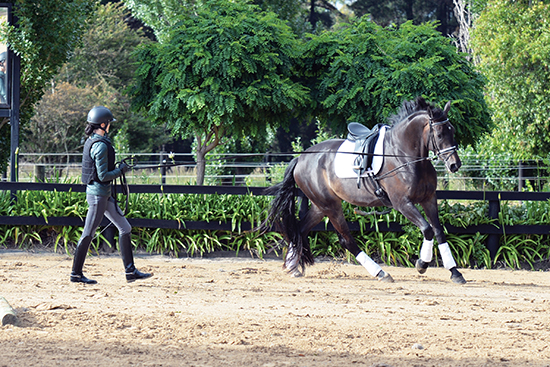
And no matter what the rules say, Rafael talks to his horses:
“When you lunge like this, he gets very obedient to your voice. My father always said to me, talk to the horse. All the Old Masters talked to their horses. Even in the arena, I talk to my horse. With Invasor, I talked every moment, maybe no one can hear, but horses have very sensitive hearing, they can hear anything.”
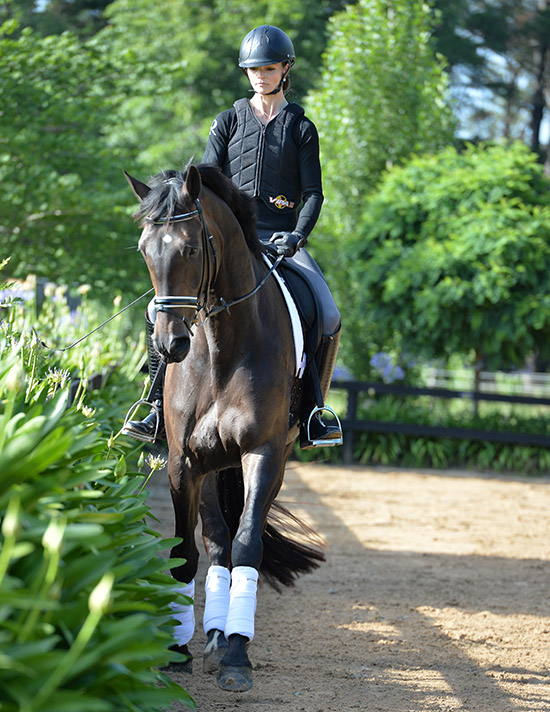
When Pernille went to ride Bestseller, the first exercise Rafael had her riding was shoulder-in, but shoulder-in to the outside, building up to outside shoulder-in down the long side, right to the corner, through the corner, up the centre line and leg yield to the long side, ‘an easy leg yield with no over bending.’ Out of the outside shoulder-in position, into a walk pirouette…
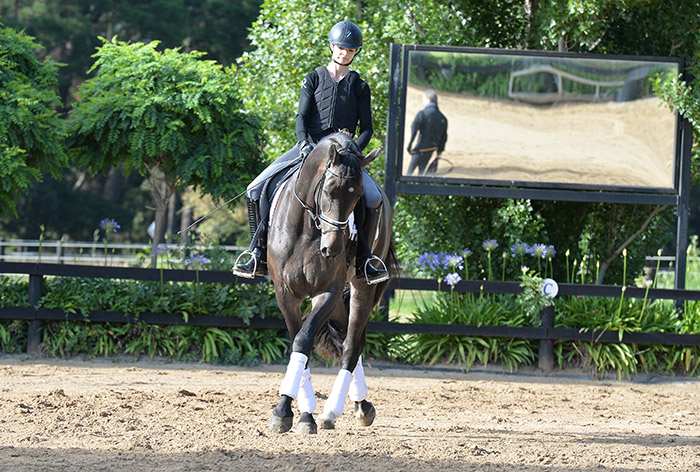
Leg yield from the centre line
Why the outside shoulder-in rather than a regular shoulder-in? Is that just with that horse or would you use that with all horses?
“I use it with all my horses, especially when they are young. Think about it, once you have the contact really good on the outside rein, then it is not problem the bending in, if you have a good contact to the outside. This is the big problem for many horses, they don’t have a good contact to the outside, they always want to bend to the inside, and then you have not a straight horse, you have an unbalanced horse, the hindquarters will slip too much out and the shoulders too much in. This is a wrong balance in the shoulder-in. To have a good balance in the shoulder-in, the horse needs to understand the outside rein contact, and the best way to do that is with this outside bending.”
Not just in the walk…
“Also in the trot and the canter. Many horses that riders just bend in all the time, you look at them behind in the canter, very poor, very short, and they are very unbalanced. You go to the outside bending, and once you have a good outside bending, then you can go to the inside bending, and then you have them very nice and straight and balanced. It’s not my system, it’s the horse’s system because I saw that it works. Many times in my clinics, the horse will show a difficult canter, not in self carriage, not using the back, but the moment you bend him to the outside, the canter improves. Use this to help and then go to the inside bending, but first the outside.”
Bestseller has a simply huge canter and Pernille had to really concentrate now:
“Canter, don’t lose the contact, only release when you feel the balance.”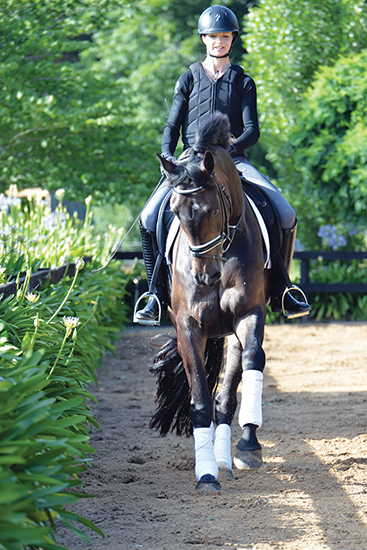
And after the canter, it was a good time to go back to the trot:
“After the canter is the best moment to go to medium trot. If a horse is not expressive in the trot, use the canter to get that trot balance. Some horses find it hard to find the rhythm for passage, for them, canter, and then ask for passage, is easier.”

Little questions, questions designed to make it easy to get the result (think about that reverse flex into the pirouette for a moment) but questions all the time, keeping the horse and the rider thinking.
“I like this work, short but intense, look at the horse, he’s 100% confident with us. This is a really nice young horse.”
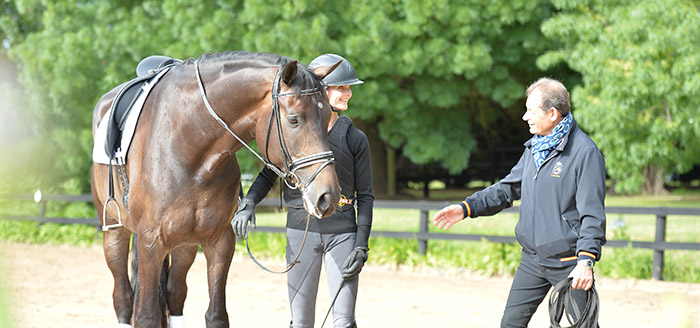
next we talk to Rafael
And it was time for a cup of coffee and a chat…
“It’s all about balance, like life. What is life, it is balance – and you need to find the balance when you are riding. Show the horse, this is the balance you need to have, and now I will let you do it. And the horse realizes, oh I can do it. This is what makes a horse beautiful to watch, he is so natural that it looks as if the horse is doing it alone.”
“When I watch people ride, often they overdo the straight lines, straight and go and go and go. I don’t know what they are searching for? Thirty times straight lines, for what? The horse has no balance on the first, the second, the third or the last time – come on, do something. Every step you make with a horse should be for something. My work is more intense, short and a break, intense, short, and a break. Not so long and boring, one round after another, always the same – I am warming up – he doesn’t need so much warming up. Let him free in the paddock, suddenly he is in balance, he doesn’t need such a long time to warm up his muscles.”
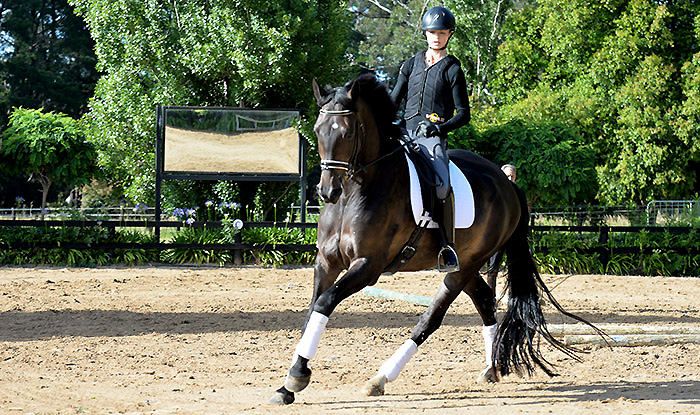
“As you saw with Pernille today, we never did more than one straight line, and then another thing, a circle, some lateral work, one straight line, again the circle, the change of hand, every time it is mixed.”
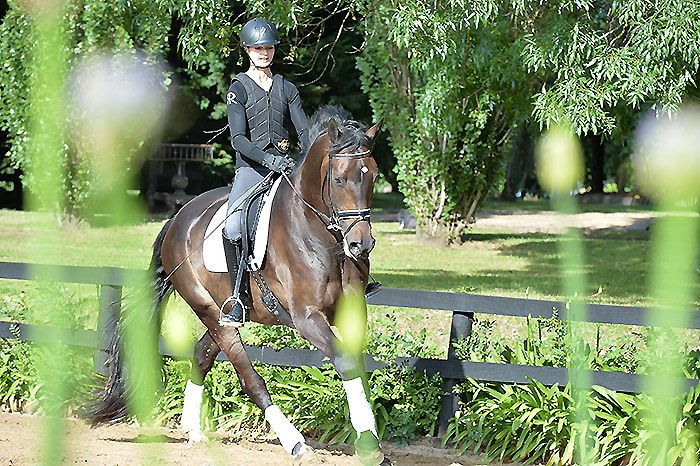
Bimbo Peilicke used to say, only in Australia did the horses go like a washing machine, round and round and round and round…
“You know that Peilicke was our first trainer (of the Spanish dressage team) – before Jürgen Koschel came to Spain. Bimbo could not speak English, he only spoke German, then when he came to our School it was very funny, because the only one who knew a little bit of German, was me. With the others he was just shouting in German, NEIN, NEIN, NEIN!”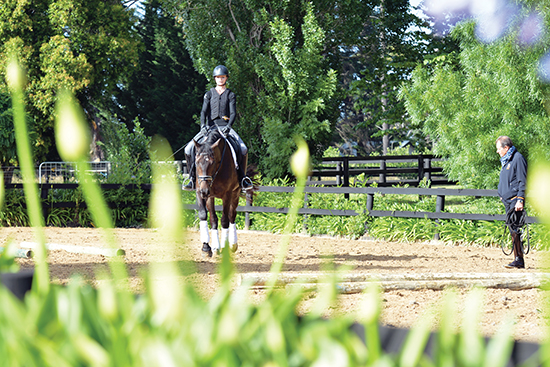
“That was over 20 years ago, my first Olympics were in 96. Bimbo came at the beginning of 95, and that was the year that the Spanish Team first went to a European Championship, in Mondorf in Luxemburg. That is where we got the qualification to go to the Olympics. Afterwards, Bimbo saw us many times and saw we were getting better and better, and he was always very happy about that.”
Is it one of the problems, that we are not balanced with our young horses – we rush them, we ask them for these crazy huge trots when they are not ready…
“100%. In my opinion, the young horse is not ready for such a big expressive trot. The young horse has to move naturally, but not over-moving. Some five-year-old horses, they move like a Grand Prix horse in the trot…”
A bad Grand Prix horse…
“Yes, a bad Grand Prix horse, because a trot like this will ruin the balance of the horse. I think this is a problem because all the commercial pressure goes in this direction, and sometimes we over-push the young horses, to show something they are not ready for.”
A bit like the Grand Prix horses on YouTube doing hand-stands, hind legs moving up and down behind, and standing on their front legs…
“It is not easy, horses who piaffe really well, they need to have that in their nature. Some horses don’t have piaffe by nature, and when you ask for it, too much on the spot, and they don’t know how to sit and keep a free balance in the front legs and the shoulder, then they have the tendency to jump from behind and keep the weight on the front legs. You can correct this a little bit, but it is not easy.”
But the video of Liselot Linsenhoff and Piaffe was so much nicer…
“Hindquarters lowered, the nose a little in front of the vertical. I think we have to come back to the classical dressage always, adapted to the competition dressage. The classical dressage is the only way to go in the right direction. Sometimes they want too much expression with the horses, and sometimes the secret is the natural way.”
“The focus can be on the Freestyle but you should still be very strict as to how you judge the Freestyle. Dressage will never be as popular as football, it was born 1000 years ago when Xenophon started to create dressage – why? To train his horses better for the war. Then in the eighteenth century came the Royal Schools, like Versailles, Vienna, in Budapest, then they discovered another way to train which is more in the nature of the horse, not so cruel, not so hard. After the Second World War, the horse was not important for war, but it became very important for sport.”
“Dressage is very important because anyone who wants to ride in any equestrian sport, needs dressage to develop good locomotion, good balance, good control. That means we have to go back to the basics discovered by the Classical School, 400 years ago, and of course, dressage is always a bit open and is adapted to the competition dressage. The horses now move much more than they ever moved before, this is okay, but make a good balance of how much you ask the horses – I’ve got nothing against expressive, but it should also be natural.”
Back home in Jerez in 2016, when Charlotte Dujardin and Carl Hester got away from the cold in England and visited for the CDI, Rafael offered Charlotte a ride on his Andalusian, Adivino to get a feel of an Iberic horse…
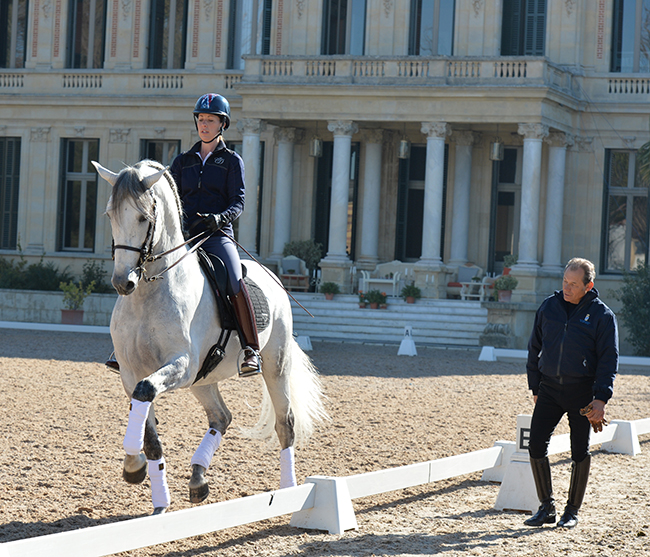
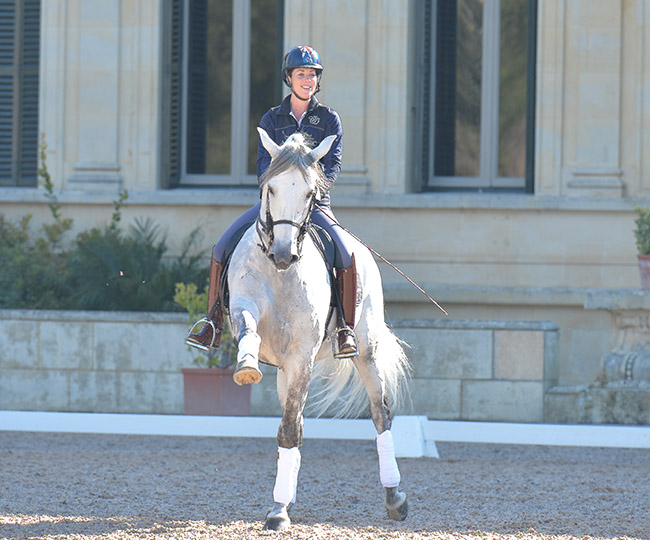
Charlotte had fun and amused the onlookers with some Spanish walk, she said it was Adivino’s idea…
“Of course I am always looking for Andalusian horses. Along with the Lusitano, they are the only horses different to the others and we need it for the competition. There is something special about them, and they are the only breed outside the Warmbloods that are able to stay there and fight against the super Warmbloods, that get more super all the time. Mariette Withages always said that the two big changes in the last 20 years in dressage have been the creation of the freestyle, and the Andalusian horse coming in. The Andalusian horses show to the breeders and the riders of the Warmbloods, oh, this is a piaffe, this is a real classical piaffe, and it is important that we bring more Andalusian horses to the top in the sport.”
For more articles with Rafael, go to:
Breed yourself a dressage star. Choose a stallion with top European Bloodlines – there are new stallions available for 2022 See them all – go to: www.ihb.com.au
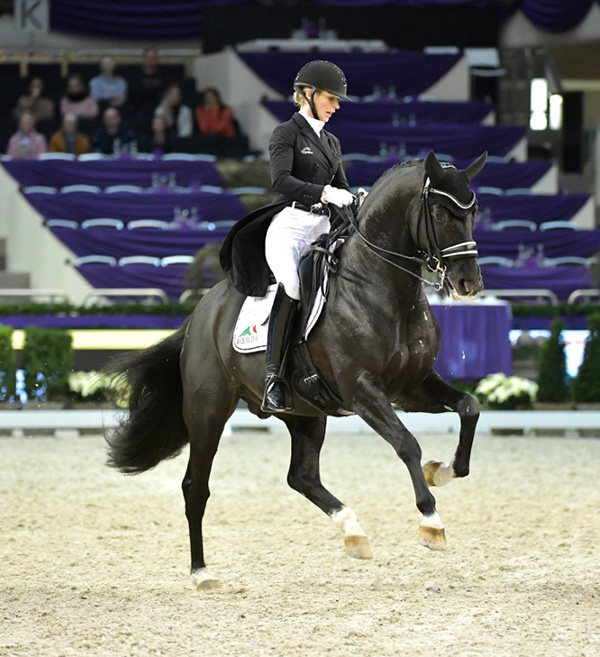
Total Hope, combining the bloodlines of Totilas and Weihegold! Nurnberger Bürg-Pokal winner…
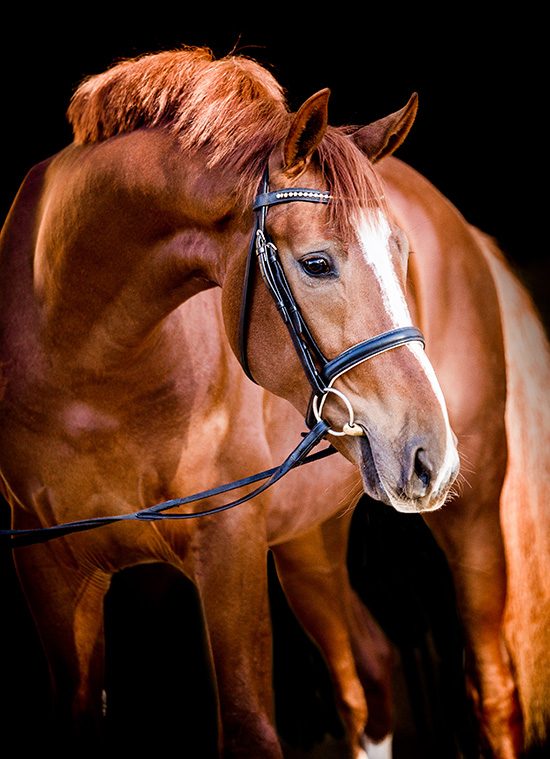
Dohnanyi



Kære Anne. Tak for en skøn søndag. Her er visdomsord fra Rafael Soto. Bla.a. Kontraversader 🙂
Knus
Ina
i.zetter@outlook.dk